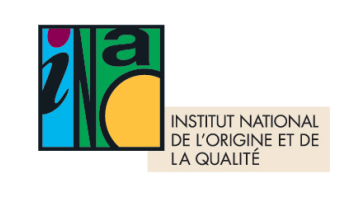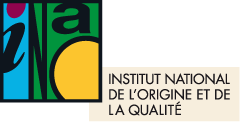2000 to present: INAO, a policy tool for promoting French agricultural products
Since the 2000s, various expansions of the Institute's missions have made today's INAO a tool for promoting French agricultural products.
The Agricultural Orientation Act of July 9, 1999 once again extended the Institute's missions, this time to include protected geographical indications for the food industry. A major reform was initiated in 2006, in response to the piling up of regulations and the accumulation of signs that did not cover the same concepts. The aim is to simplify the system for operators, while AOC/AOP, IGP, LR, STG and organic farming are managed by different structures, in a complex framework with no uniformity between signs. The concept of signe officiel d'identification de la qualité et de l'origine (SIQO) appears and INAO becomes the Institut national de l'origine et de la qualité. Label Rouge, organic farming and STG then became part of INAO's missions.

Its missions are defined in the Code rural et de la pêche maritime (CRPM). The Institute's principle of co-decision is preserved and extended to all SIQO.
This new framework enables INAO to become the French government's tool in the policy of promoting agri-food products. A fundamental change has also been implemented: INAO no longer carries out controls directly, but supervises independent, impartial third-party bodies. This reform also instituted the status of organisme de défense et de gestion, a group of operators who draw up and contribute to the implementation of product specifications.
In 2008, the Common Organization of Agricultural Markets extended the notion of PDO and PGI to the wine sector. The following year, the INAO's missions were extended to wine-producing PGIs, before being extended to geographical indications for spirit drinks in 2010.
As the Institute's missions were extended to these different signs, INAO expanded its bodies, which now number seven:
- The Conseil permanent
- The Comité national des Appellations d'origine relatives aux vins et aux boissons alcoolisées, et des boissons spiritueuses
- The Comité national des AOP laitières, agroalimentaires et forestières
- The Comité national des Indications géographiques protégées, Labels Rouges and Spécialités traditionnelles garanties
- The Comité national des Indications Géographiques Protégées relatives aux vins et aux cidres
- The Comité national de l'Agriculture Biologique
- The Conseil des Agréments et des Contrôles
These various developments have helped define what official quality and origin identification signs are today, as well as the role of the INAO.
The INAO today continues to work alongside professionals to preserve and ensure the prosperity of SIQOs. Their durability also depends on their ability to adapt to contemporary challenges: sustainability and climate change, market developments, societal expectations, animal welfare, technological innovations... aren't SIQOs "successful innovations"?
Far from being static, production under SIQO is evolving, while preserving its characteristics, authenticity and values. INAO is both the guarantor of this history, traditions, and customs, and the promoter of innovations.
Find out more about the History of INAO
- Key dates for official signs identifying quality and origin (SIQO) and INAO
- A brief history of official signs identifying quality and origin (SIQO) and INAO
- 1905-1935: the beginnings of appellations d'origine: a response to wine crises
- 1935-1970: the advent of INAO and the creation of appellations d'origine contrôlées
- 1960-1990: the creation of the Label Rouge and the recognition of organic farming
- 1990-2000: the development of SIQO in Europe and the extension of INAO's missions
- 2000 to today: INAO, a policy tool for promoting French agricultural products
- Bibliography
